
Roots
There exists within each curl, every coil, a whisper of ages past, a memory held in the very molecular structure of a strand. For those with textured hair, this isn’t merely a personal journey of care; it represents a profound connection to an ancestral lineage, a living archive of identity and fortitude. Roothea walks alongside you in this exploration, seeking to honor the deep wellspring of heritage that informs our understanding of textured hair and its care. We approach this subject not with a fleeting curiosity, but with a reverence for the wisdom passed down through generations, often silently, within the very fabric of communities, particularly within Black and mixed-race experiences.
How then, might modern practices genuinely acknowledge and respect this enduring legacy? The answer lies in recognizing that hair care, for textured hair especially, extends beyond simple aesthetics. It intersects with history, sociology, and even biology, a testament to its multifaceted significance. Each consideration for a modern practice should first pose a question ❉ how does this echo the traditions of our forebears?
What lessons do ancient practices offer to our present-day routines? We aspire to a symbiosis, where contemporary understanding elevates ancestral methods, and ancestral wisdom grounds modern innovation in meaningful purpose.

Ancestral Hair Structures ❉ The Fabric of Being
To truly grasp how modern practices may honor heritage hair care, we must first comprehend the biological blueprint of textured hair itself. This understanding forms the bedrock. Textured hair, spanning from loose waves to tight coils, possesses a distinct anatomical structure. Its elliptical follicle shape causes the hair shaft to grow in a curvilinear, often helical, pattern.
This unique morphology creates natural points of weakness along the bends and twists of the strand, rendering it more susceptible to dryness and breakage compared to straighter hair types. Yet, this very architecture, often mislabeled or pathologized by Eurocentric beauty standards, represents a marvel of natural engineering, adapted across millennia to diverse climates and cultural contexts.
Modern scientific inquiry, with its advanced microscopy and biochemical analyses, confirms what ancestral practitioners understood through observation and intimate experience. The external cuticle layer of textured hair, composed of overlapping scales, often sits more open than in straighter hair, contributing to increased moisture loss. The internal cortex, rich in keratin proteins, responds uniquely to environmental stressors. Ancestral remedies, such as deep oiling and specialized wraps, provided protection, acting as a barrier against arid conditions and mechanical stress long before the advent of laboratory-formulated serums.
The wisdom of these practices, often transmitted orally, served as a foundational science, anticipating the findings of contemporary trichology. It teaches us that care is not just about what we apply, but how we respect the inherent characteristics of the hair itself.
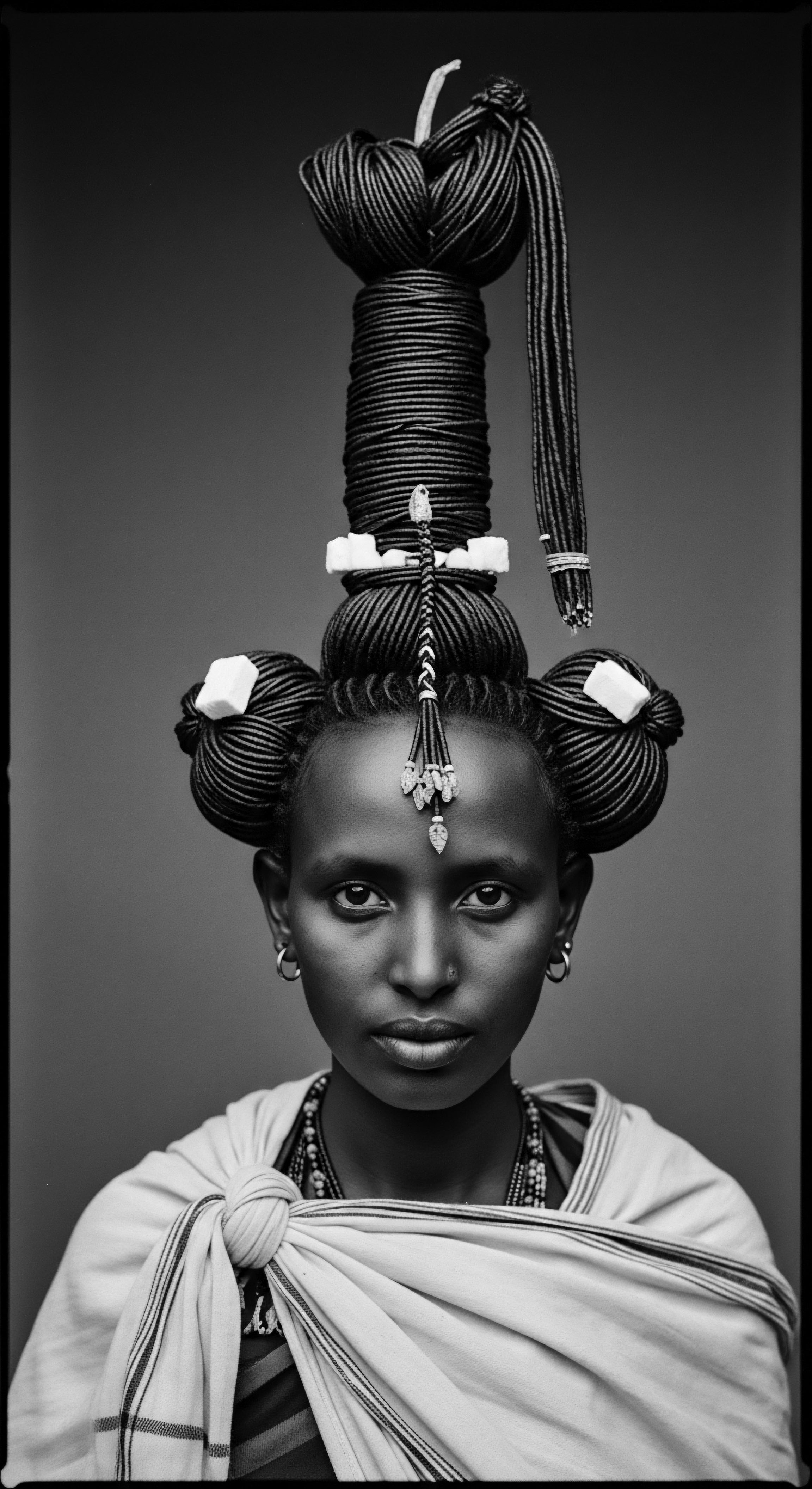
The Lingua of Locks ❉ Naming and Knowing
The language we employ to describe textured hair carries weight, reflecting historical understandings and sometimes colonial biases. Western classification systems, often numerically and alphabetically assigned, attempt to categorize a spectrum of hair types. Yet, these systems frequently fail to encompass the spirit and breadth of textured hair heritage.
They can, at times, inadvertently perpetuate a hierarchy of ‘good’ versus ‘bad’ hair, a vestige of colonial mindsets that sought to diminish indigenous beauty. In contrast, traditional societies often possessed a nomenclature deeply rooted in local context, describing hair not just by its curl pattern, but by its symbolic association, its appearance in ritual, or its connection to the earth.
How can modern practices honor heritage hair care through respectful nomenclature? By acknowledging the historical roots of descriptive terms and prioritizing those that celebrate, rather than categorize reductively. This includes a conscious effort to understand the cultural meanings behind terms used within Black and mixed-race communities for generations. Recognizing that hair was, and remains, a powerful communicative tool is crucial.
For instance, in many West African societies, the intricacy of a hairstyle or its adornment conveyed social status, age, marital status, or even tribal affiliation. The language surrounding hair, therefore, extended beyond mere description; it was a complex system of social signals. (Omotos, 2018)
Consider the Yoruba people of Nigeria, where hair held, and holds, profound spiritual significance, often seen as the closest point to the divine. (Mbodj, in Okan Africa Blog, 2020) Hairstyles there could signify community roles, with specific braids marking a woman’s marital status or rites of passage. (Afriklens, 2024) This layered meaning demonstrates a far richer descriptive vocabulary than simple numerical categorizations could ever provide.
Modern hair care, when truly honoring heritage, seeks to elevate ancestral terms and approaches, perceiving them not as antiquated curiosities but as cornerstones of deep knowledge.

Cycles of Growth, Cycles of Life ❉ Beyond Biology
The biological cycle of hair growth—anagen (growth), catagen (transition), telogen (resting), exogen (shedding)—is a universal phenomenon. However, for textured hair, the peculiarities of its structure mean that attention to length retention, rather than simply growth, has long been paramount. Hair, on average, grows approximately half an inch each month. However, for highly coiled strands, this length often appears minimized due to shrinkage, and breakage can obscure perceived growth.
This biological reality made ancestral practices aimed at preserving length all the more significant. Traditional wisdom often linked hair health to overall bodily wellness and environmental harmony, rather than viewing hair as a separate entity.
The Himba women of Namibia, for instance, offer a powerful illustration of this integrated approach. Their hair and skin are regularly coated with a mixture known as “otjize,” a paste composed of red ochre, butterfat, and sometimes aromatic resins. This practice serves not only as a beauty ritual but also as a protective barrier against the harsh desert sun and insects, simultaneously nourishing the hair and scalp. (OnlyOne Africa, 2025; Bebrų Kosmetika, 2024) This traditional method directly addresses the challenges of moisture retention and environmental protection for coiled hair, predating modern UV protectants and deep conditioners.
It is a case study in practical, heritage-informed hair science, a profound connection to the land and its resources. The application of otjize also represents a continuous, lifelong ritual, marking different stages of a woman’s life, demonstrating how hair care was deeply entwined with social and spiritual existence, an echo of life’s own cyclical nature. (Bebrų Kosmetika, 2024)
Such ancestral practices remind us that optimal hair growth and length retention are not solely a matter of topical applications. They are reflections of inner vitality, diet, and a deep, respectful connection to the environment and communal practices. Modern hair science increasingly acknowledges the role of scalp health, nutrition, and stress management, often unwittingly reaffirming ancient principles.
How can we, in our present day, embody this holistic vision? By valuing the ingredients sourced from the earth and the communal traditions that once accompanied their preparation and application, seeing beyond mere cosmetic benefit to the deeper wellness they represent.

Ritual
The story of textured hair, an enduring saga of beauty and resilience, is told not only through its very structure but through the hands that have styled it across centuries. Hair styling, particularly for Black and mixed-race communities, has always been more than an aesthetic pursuit. It is a profound ritual, a communal act, and a potent expression of identity.
How can modern practices honor heritage hair care within the realm of styling? By acknowledging the deep roots of each braid, twist, and coil, understanding the history woven into every pattern, and respecting the cultural significance of the tools and techniques employed.
These practices, honed over countless generations, speak of survival, communication, and artistry. They recount tales of resistance during periods of oppression and celebration in moments of liberation. To truly honor this heritage, we must approach styling with an awareness that we participate in a continuous lineage, a living tradition that connects us to those who came before. This involves not only learning the technical aspects but also understanding the cultural contexts that breathed life into these forms.

Protective Canopies ❉ Beyond Aesthetics
Protective styling, a widely recognized category of textured hair care today, possesses an ancient and profound heritage. Styles such as braids, cornrows, and twists, often dismissed as mere trends in some cultural spheres, served as vital means of survival, communication, and identity in pre-colonial African societies. They were not merely beautiful adornments; they were living documents. Specific patterns and designs conveyed marital status, age, tribal affiliation, wealth, and even spiritual beliefs.
(Okan Africa Blog, 2020; Afriklens, 2024) The communal act of braiding, often taking hours, strengthened bonds within families and communities, serving as a social gathering where stories were shared and knowledge transmitted. (Afriklens, 2024)
During the transatlantic slave trade, when enslaved Africans faced systematic attempts to strip away their cultural markers, hair braiding became an act of profound resistance and cultural preservation. (Afriklens, 2024) Enslaved women would secretly braid rice seeds into their hair before forced migration, ensuring the survival of staple crops in new lands. (BLAM UK CIC, 2022) Cornrows were used to map escape routes from plantations. (BLAM UK CIC, 2022; Afriklens, 2025) This covert ingenuity underscores the critical function of these styles beyond simple appearance.
How can modern protective styles truly honor this heritage? By recognizing their historical weight, by learning traditional techniques with reverence, and by using them as opportunities for cultural connection, rather than just quick fixes for length retention. It is about understanding that a style can carry the weight of history.

How Did Braiding Patterns Once Record Community Narratives?
The seemingly simple act of braiding hair was, in various African societies, a sophisticated form of visual communication. Patterns could delineate one’s village of origin, an individual’s role within the community, or signal significant life events like mourning, marriage, or impending war. The Ashanti people of Ghana, for example, incorporated Adinkra symbols into their hairstyles, each symbol holding a specific proverb or message. (The History and Cultural Significance of African Hair Braiding, 2023) These intricate designs served as a living lexicon, allowing members of the community to “read” the stories and statuses of others without words.
In the Benin Kingdom, certain hairstyles, such as the Uguakpata (frontal hair) and Ogbon (three vertical plaits at the back), specifically denoted the high status of chiefs and their connection to the Oba, or king. (RefinedNG, 2024; NEBO TV, 2017; IASR Journal of Humanities and Social Sciences, 2021) When the Oba passed, all men in the kingdom would shave their heads, a symbolic act of mourning and recognition of a new era. (IASR Journal of Humanities and Social Sciences, 2021; THE BENIN KINGDOM ❉ RITUALS OF KINGSHIP AND THEIR SOCIAL MEANINGSO, 2004) Modern practitioners can honor this by learning the origins of styles, sharing these stories with clients, and promoting braiding as an act of cultural continuity, rather than merely a fashion statement.

Defining Natural Contours ❉ Hand and Herb
Before the vast array of modern styling gels and creams, ancestral communities relied on the earth’s bounty and the skill of human hands to define and shape textured hair. Natural substances, such as shea butter, various plant oils, and herbal concoctions, provided both nourishment and hold. The application was often a tactile, intimate process, involving gentle manipulation to clump curls, smooth strands, or elongate coils.
The emphasis was on enhancing the hair’s inherent qualities, working with its natural tendencies rather than against them. This approach cultivated a deep understanding of one’s hair through consistent, mindful interaction.
Traditional African societies used natural ingredients not only for their physical benefits but also for their symbolic properties. The oils derived from local plants were believed to connect individuals to their environment and ancestors. (Africa Imports) Modern practices can learn from this by prioritizing natural ingredients, understanding their historical uses, and encouraging a hands-on, observational approach to hair care.
This means fostering patience, allowing the hair to respond to natural treatments, and moving away from the instant gratification often promised by synthetic alternatives. It is about slowing down and connecting with the rhythm of natural growth and form.
Ancestral styling was a form of communal storytelling, where patterns became a language connecting generations and cultural narratives.
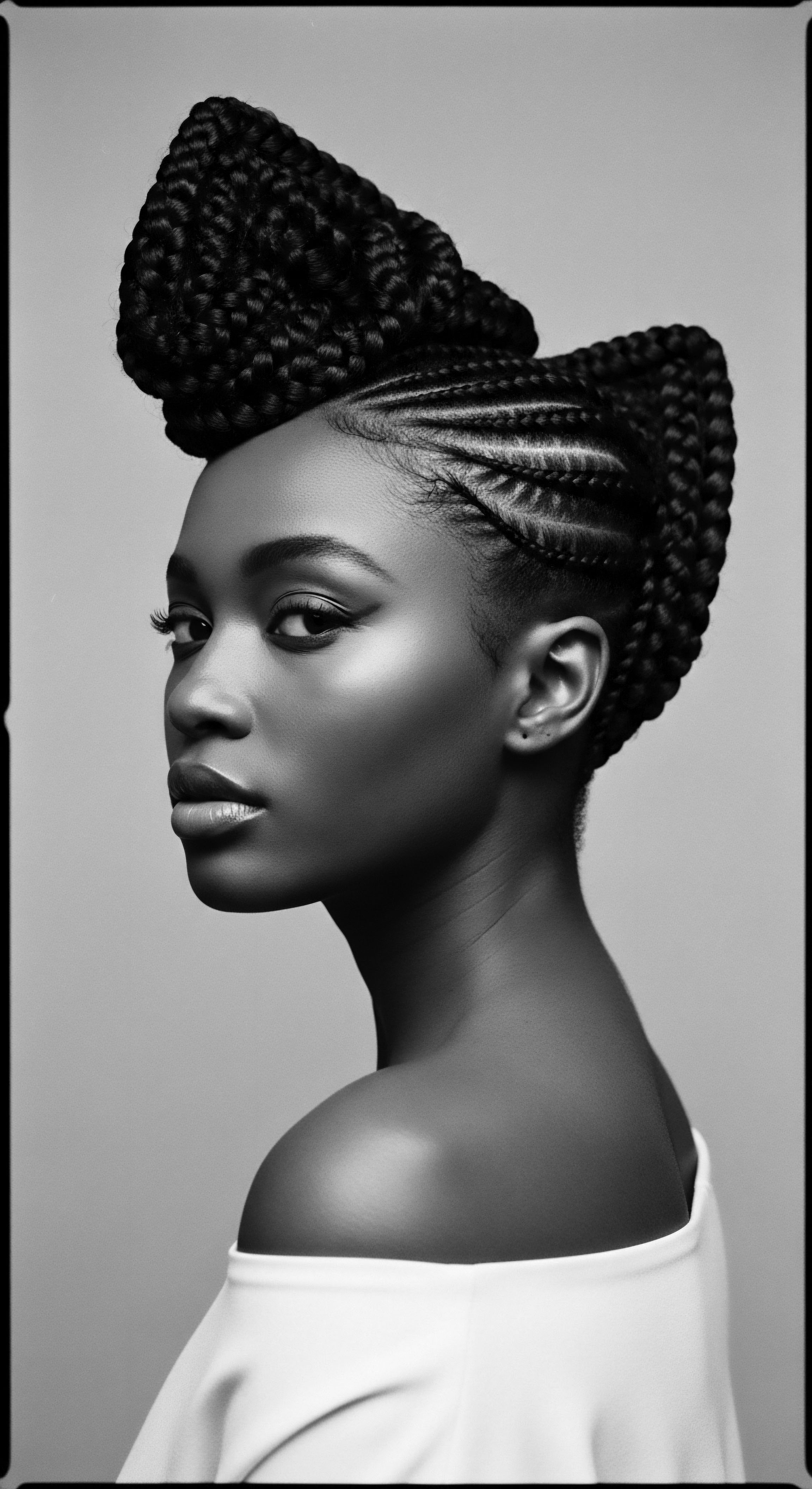
Adornment and Legacy ❉ Beyond the Everyday
The practice of adorning hair with beads, shells, cowries, and precious metals is as ancient as textured hair itself. These adornments served multiple purposes ❉ aesthetic beauty, indicators of social standing, protection, and spiritual connection. In ancient Egypt, for example, both men and women, especially the elite, wore elaborate wigs made from human hair, wool, or plant fibers, often decorated with gold, beads, or ribbons, symbolizing wealth and religious devotion. (Afriklens, 2024; King Tut, 2024; Ancient Egyptian Hair and Beauty, 2005) The earliest known hair extensions, dating to approximately 3400 BCE, were found in Egypt, suggesting a long history of augmenting natural hair for various reasons, including status.
(Fletcher and Salamone, 2016; The Most Democratic Form of Adornment Through their hairstyles and wigs, still visible in art and preserved on mummies, much can be gleaned about the ancient Egyptians’ fashion, health, diet and lifestyle across time. By Joann Fletcher Hair and Wigs in, 2019) This practice extended across various African cultures, with specific adornments carrying specific meanings. For instance, cowrie shells in some West African cultures represented wealth and prosperity. (Bebrų Kosmetika, 2024)
Modern adaptations of wigs and extensions can honor this legacy by acknowledging their roots in cultural expression and status, rather than solely as a means to conform to external beauty standards. The conscious selection of wigs or extensions that echo traditional textures or styles, or the thoughtful incorporation of culturally significant adornments, transforms these items from mere accessories into symbols of heritage. The consideration also extends to the ethical sourcing of hair and materials, ensuring that modern practices do not inadvertently perpetuate exploitative systems, but instead contribute to the well-being of communities connected to these traditions.
| Historical Adornment / Practice Cowrie Shells |
| Cultural Significance / Ancestral Use Symbols of wealth, fertility, and spirituality in West African societies. (Bebrų Kosmetika, 2024) |
| Modern Interpretation / Honorific Practice Using ethically sourced cowrie shells as hair jewelry; understanding their historical value. |
| Historical Adornment / Practice Gold Beads & Filaments |
| Cultural Significance / Ancestral Use Signified royalty, divinity, and high social status in ancient Egypt and other African kingdoms. (King Tut, 2024; Ancient Egyptian Hair and Beauty, 2005) |
| Modern Interpretation / Honorific Practice Incorporating gold or metallic elements into protective styles; selecting quality, long-lasting hair jewelry. |
| Historical Adornment / Practice Plant Fibers & Seeds |
| Cultural Significance / Ancestral Use Used for extensions, structural support in styles, or for their aromatic and protective properties; sometimes for covert communication (e.g. rice seeds). (BLAM UK CIC, 2022) |
| Modern Interpretation / Honorific Practice Exploring plant-based extensions; appreciating natural materials in hair accessories; knowing the history of resourcefulness. |
| Historical Adornment / Practice Ochre Paste (Otjize) |
| Cultural Significance / Ancestral Use Used by Himba women for sun protection, hair moisture, and cultural identity. (OnlyOne Africa, 2025; Bebrų Kosmetika, 2024) |
| Modern Interpretation / Honorific Practice Learning from natural protective barriers; adapting color treatments to mimic natural pigments with protective properties. |
| Historical Adornment / Practice Communal Braiding & Styling |
| Cultural Significance / Ancestral Use A social ritual for bonding, storytelling, and knowledge transfer. (Afriklens, 2024; Okan Africa Blog, 2020) |
| Modern Interpretation / Honorific Practice Creating modern spaces for communal hair care; sharing knowledge intergenerationally; valuing the process as much as the outcome. |
| Historical Adornment / Practice Understanding these historical adornments helps us contextualize modern choices, elevating them to acts of cultural preservation. |
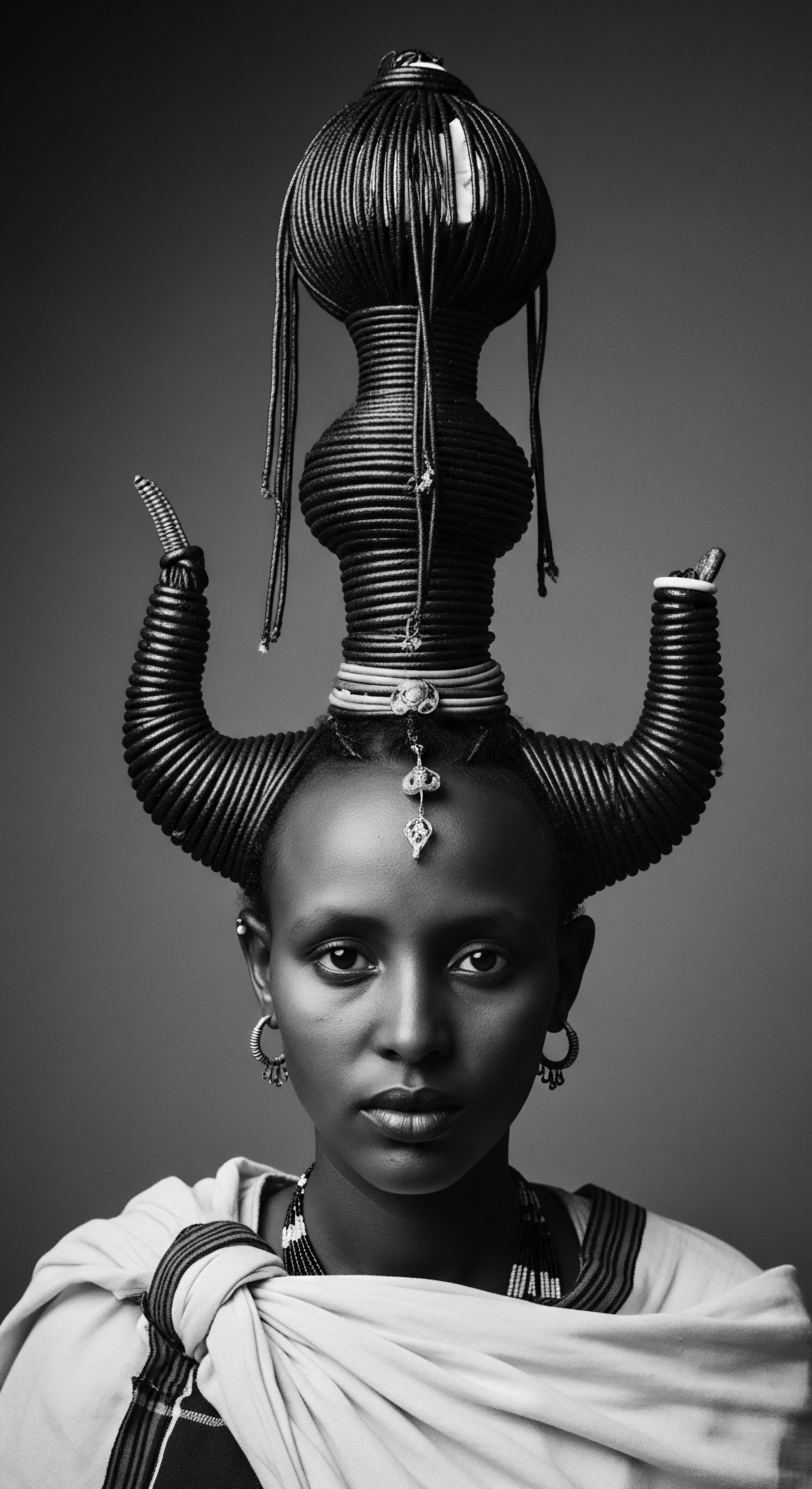
Relay
The continuity of hair care, from daily rituals to problem-solving, represents a living relay race of knowledge passed across epochs. For textured hair, this relay holds particular weight, as care practices were often refined out of necessity and a deep connection to natural cycles and collective wellbeing. How can modern practices honor heritage hair care within the sphere of daily regimen and holistic wellness?
By recognizing that ancestral wisdom was often a blend of keen observation, practical science, and spiritual reverence, all intertwined. This section delves into the intricate dance between ancestral knowledge and contemporary understanding, revealing how a profound appreciation for heritage can shape our approach to hair health and repair.
This is not a simplistic call to abandon all new developments for old ways. Instead, it is an invitation to discern, to extract the timeless principles from historical practices, and to marry them with the advancements of modern trichology. The aim is to create care regimens that are both deeply resonant with cultural memory and powerfully effective in contemporary life. It is about understanding the ‘why’ behind the ‘what’ of ancestral routines, allowing that understanding to inform the intentionality of our current choices.

Crafting Personal Rhythms ❉ From Elder to Today
Ancestral hair care was seldom a rigid, one-size-fits-all prescription. Instead, it involved a keen observation of individual hair characteristics, environmental conditions, and available resources. Elder women, often the custodians of this wisdom, developed and passed down methods that addressed particular needs, creating personalized rhythms of care.
This bespoke approach, rooted in centuries of lived experience, stands in stark contrast to the mass-produced, universal solutions often marketed today. The emphasis was on working with the hair, listening to its needs, and providing nourishment from the earth.
A personal regimen, inspired by this ancestral wisdom, begins with observation and sensitivity. It considers the unique curl pattern, the porosity, the density of individual hair, and then aligns care with natural ingredients and techniques that have stood the test of time. Modern science, with its ability to analyze chemical compositions and cellular interactions, can sometimes provide the ‘how’ and ‘why’ for phenomena understood intuitively by our ancestors. For example, the use of various butters and oils from the African continent, such as shea butter, palm oil, or coconut oil, was a widespread practice.
(Africa Imports; My Sasun, 2023) These natural emollients provided deep moisture and protection, properties now validated by lipid research demonstrating their ability to seal the hair cuticle and reduce protein loss. (Africa Imports, 2024) This congruence between ancient knowledge and modern findings serves as a powerful validation of heritage practices.
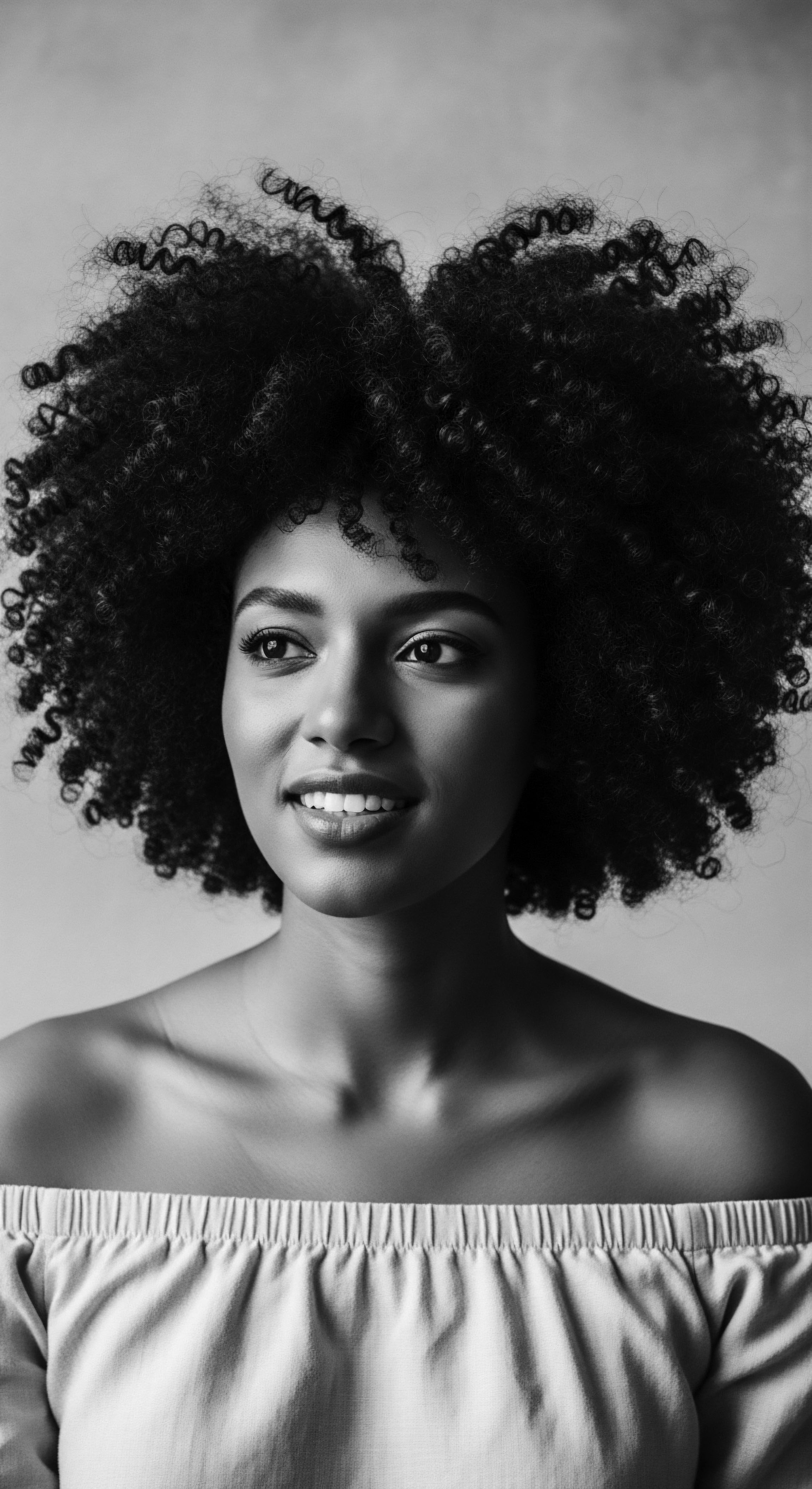
Can Ancestral Practices Offer Pathways for Scalp Vitality?
The health of the scalp, a foundation for robust hair, was a primary concern in ancestral hair care. Traditional practices recognized the scalp as an extension of the body’s overall wellness, often treating it with cleansing and stimulating rituals. African black soap, often made from plantain skins, cocoa pods, and palm oil, served as a gentle cleanser for both hair and skin, without stripping natural oils.
(My Sasun, 2023; Africa Imports) Its composition, rich in antioxidants and minerals, supported scalp vitality, a concept now backed by scientific understanding of the skin microbiome and inflammation. (Africa Imports)
Scalp massages, often performed during the application of oils or herbal infusions, stimulated blood flow, promoting nutrient delivery to the hair follicles. These actions, understood ancestrally through touch and observed growth, are now explained by vascular biology. Rooibos tea, native to South Africa, consumed internally and sometimes used topically, exhibits antimicrobial and antioxidant properties that contribute to healthy hair growth. (Sellox Blog, 2021) Ghee, a clarified butter, was used in Ethiopian communities for hair care, a testament to utilizing readily available, nourishing substances.
(Sellox Blog, 2021) Modern hair care, in its pursuit of scalp health, stands to gain greatly by re-examining these time-honored methods, allowing the wisdom of the past to guide contemporary formulations and routines. It prompts us to consider the energetic flow of life force, or chi, that many ancestral systems associated with the head, reinforcing the holistic approach to wellbeing.
The generational transfer of hair care wisdom is a continuous stream, connecting past solutions to present needs.
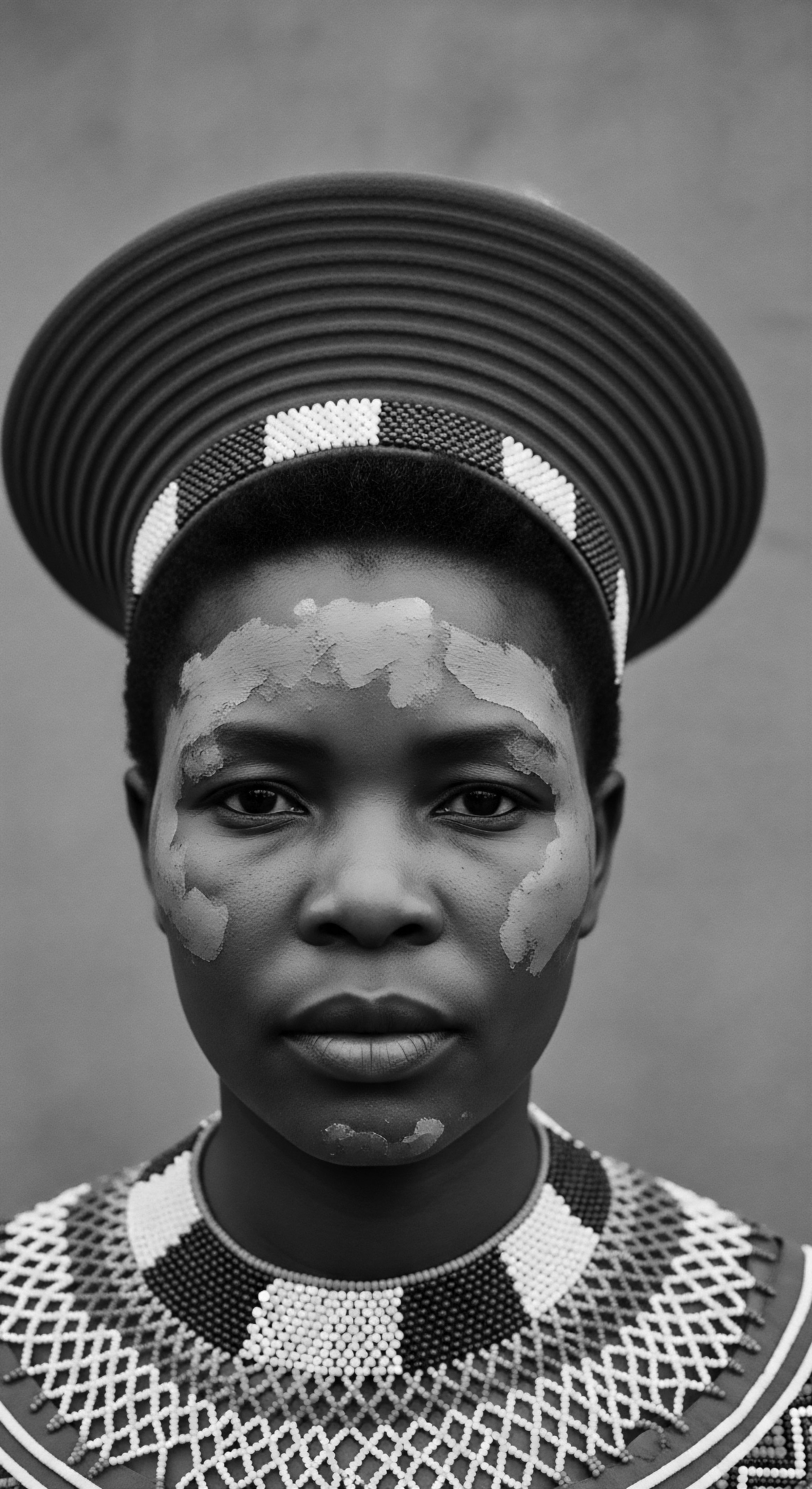
The Night’s Gentle Embrace ❉ Sacred Sleep Protection
The practice of covering the hair at night, a commonplace ritual for many with textured hair today, holds a venerable history, deeply tied to both practical preservation and profound cultural significance. Before satin bonnets and silk pillowcases, various head coverings served to protect intricate hairstyles, retain moisture, and symbolize identity. Headwraps, known by different names across Africa and the diaspora—such as ‘gele’ in Yoruba-speaking parts of Nigeria or ‘dukus’ in Ghana—were not merely fashion statements.
(Leone Culture, 2023; sonson, 2021) They communicated social status, religious affiliation, marital status, and even veiled secret messages during times of oppression. (Afrostreet, 2025; Leone Culture, 2023; Ari Party Hair, 2025)
During the transatlantic slave trade and subsequent colonial eras, head coverings, sometimes forced upon Black women as markers of subjugation, were defiantly transformed into symbols of dignity and resistance. The ‘Tignon Laws’ in 18th-century Louisiana, which mandated that free Black women cover their hair, paradoxically spurred the creation of elaborate, vibrant headwraps that became expressions of defiance and artistry. (Jelani Travel, 2023; Afrostreet, 2025) This historical context elevates the modern bonnet or headwrap from a simple nighttime accessory to an item imbued with deep cultural memory and resilience.
It serves as a daily reminder of a lineage that preserved beauty and identity against tremendous odds. This tradition embodies a powerful continuity, protecting our crowns both literally and symbolically.
- Gele ❉ Elaborate headwrap worn by Yoruba and Igbo women in Nigeria for celebrations, often signifying high status. (Ari Party Hair, 2025)
- Duku ❉ A term for headscarf in Ghana and Zimbabwe, conveying distinct social messages about the wearer. (Afrostreet, 2025)
- Doek ❉ A term used in South Africa, historically representing dignity during apartheid. (Afrostreet, 2025)
- Kiko ❉ A form of thread-wrapping style in Yoruba culture, carrying meanings related to femininity and marriage. (Afriklens, 2024)

Earth’s Bounty for the Strand ❉ Ingredients from Time
The pharmacopeia of ancestral hair care was drawn directly from the land, relying on the potent properties of plants, seeds, and natural secretions. These ingredients were selected through generations of observation and experimentation, often for their perceived ability to nourish, protect, and heal. Modern science now validates many of these traditional choices, identifying the compounds that confer their benefits. Understanding this historical connection to natural resources helps us appreciate the intentionality behind ingredient selection in modern heritage hair care.
For instance, Shea Butter, derived from the nuts of the shea tree, has been a staple across West Africa for centuries, revered for its moisturizing and healing properties. It is rich in vitamins A and E, essential fatty acids, and antioxidants, deeply hydrating both skin and hair. (My Sasun, 2023; Sellox Blog, 2021; Ancient African Beauty Traditions, 2024) African Black Soap, a traditional West African cleanser crafted from plantain skins, cocoa pods, and palm oil, provides gentle yet effective cleansing without stripping the hair’s natural moisture. (My Sasun, 2023; Sellox Blog, 2021) These traditional ingredients represent not just raw materials, but a profound understanding of botanical synergy and sustainable living, a testament to a deep ecological knowledge that modern product development would do well to emulate.

Restoring the Balance ❉ Ancestral Solutions for Common Woes
Textured hair presents specific challenges, such as dryness, frizz, and breakage, due to its unique structural properties. Ancestral practices addressed these common woes with remarkable ingenuity, often using methods that promoted resilience and vitality rather than merely masking symptoms. The principle was often one of restoration and protection, working with the hair’s inherent characteristics.
These methods were informed by a deep connection to natural cycles and a patient, consistent approach to care. Modern problem-solving for textured hair can find valuable guidance in these historical solutions.
For example, the consistent application of natural oils and butters, as seen with Himba women’s otjize or the widespread use of shea butter, directly combatted dryness and provided external fortification against environmental damage. This practice reduced breakage and enhanced the hair’s elasticity. (OnlyOne Africa, 2025; Bebrų Kosmetika, 2024) The emphasis on protective styles meant less manipulation, which naturally minimized mechanical stress and breakage, preserving length. Communal hair care sessions, beyond their social aspect, also provided opportunities for experienced hands to detect and address issues early, offering tailored advice and remedial actions.
This collective wisdom served as an informal, yet highly effective, network for hair health. Modern practices, seeking to honor this heritage, should prioritize restorative solutions over quick fixes, valuing patience, consistency, and a holistic understanding of hair health that draws from both ancestral wisdom and contemporary science.
| Common Textured Hair Concern Dryness & Lack of Moisture |
| Ancestral Practice / Ingredient Shea Butter, various plant oils (coconut, palm kernel, argan), animal fats like ghee. (My Sasun, 2023; Sellox Blog, 2021) |
| Modern Application Rooted in Heritage Using rich, plant-based conditioners and leave-ins; consistent oiling with heritage oils; protective styling to seal moisture. |
| Common Textured Hair Concern Breakage & Weakness |
| Ancestral Practice / Ingredient Regular protective styling (braids, twists); gentle handling during detangling; herbal infusions for strength. (Afriklens, 2024) |
| Modern Application Rooted in Heritage Prioritizing low-manipulation styles; using wide-tooth combs; incorporating protein treatments where needed; understanding structural vulnerabilities. |
| Common Textured Hair Concern Scalp Health & Irritation |
| Ancestral Practice / Ingredient African Black Soap; stimulating scalp massages; herbal rinses (e.g. rooibos tea). (My Sasun, 2023; Sellox Blog, 2021) |
| Modern Application Rooted in Heritage Gentle, sulfate-free cleansers; regular, mindful scalp massages; incorporating botanicals known for soothing properties. |
| Common Textured Hair Concern Shrinkage & Length Retention |
| Ancestral Practice / Ingredient Strategic protective styles; specific stretching techniques; heavy oils and butters for weight and moisture. (Afriklens, 2024) |
| Modern Application Rooted in Heritage Exploring styles that elongate curls; using conditioning agents that reduce shrinkage; maintaining moisture for elasticity. |
| Common Textured Hair Concern These dual perspectives allow us to construct effective care regimens that truly honor the legacy of textured hair. |

Reflection
The journey through the heritage of textured hair care, from the very composition of each strand to the rituals that sustained its vitality, reveals a continuum of wisdom. It is a powerful reminder that our present-day practices are not isolated acts, but conversations with centuries of knowledge. To ask “How can modern practices honor heritage hair care?” is to pose a question about respect, continuity, and an enduring legacy. We discover that true honoring goes beyond mere imitation; it compels a deep understanding of purpose, a reverence for the ingenuity of our ancestors, and an intentional commitment to the principles that guided their care.
Textured hair is a living archive, each curl holding whispers of triumphs and tribulations, of cultural celebration and defiant survival. By recognizing the scientific validity within ancestral observations, by valuing the community forged through shared hair rituals, and by consciously choosing practices that uphold dignity and identity, we solidify the ‘Soul of a Strand’. This means recognizing that a headwrap is not merely fabric, but a symbol of fortitude; that a braid pattern is not simply design, but a language; that a natural ingredient is not just a compound, but a gift from the earth. The path forward involves a harmonious melding, where innovation is guided by a profound respect for the past, ensuring that the legacy of textured hair care remains a source of strength and celebration for generations yet to come.
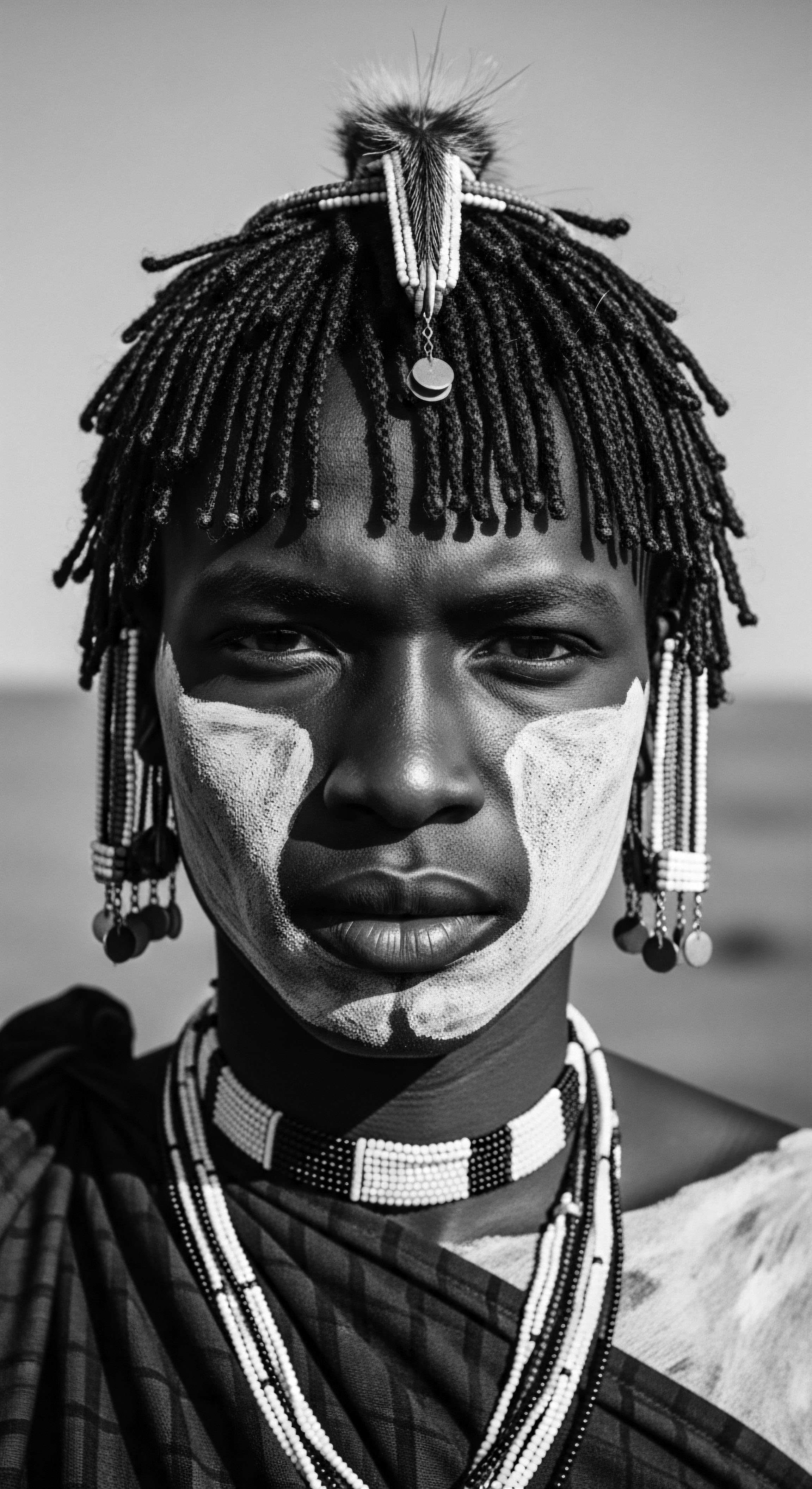
References
- Afriklens. (2024, November 1). African Hairstyles ❉ Cultural Significance and Legacy. Retrieved from Afriklens.
- Afriklens. (2025, March 24). The Evolution of African Hairstyles in Cultural Celebrations. Retrieved from Afriklens.
- Afrostreet. (2025, May 7). The Cultural Significance Of Headwraps & How to Wear Them ❉ Embracing Heritage and Style. Retrieved from Afrostreet.
- Africa Imports. (n.d.). Traditional African Secrets For Long And Healthy Hair. Retrieved from Africa Imports.
- Ari Party Hair. (2025, February 18). The History and Symbolism of Hair Wrapping Across the African Diaspora. Retrieved from Ari Party Hair.
- Bebrų Kosmetika. (2024, August 23). The Power of Hair in African Folklore ❉ Rituals and Traditions. Retrieved from Bebrų Kosmetika.
- BLAM UK CIC. (2022, September 15). The History of Black Hair. Retrieved from BLAM UK CIC.
- Fletcher, J. & Salamone, F. (2016). An Ancient Egyptian Wig ❉ Construction and Reconstruction. Internet Archaeology, 42.
- IASR Journal of Humanities and Social Sciences. (2021). The Ontological Significance of Hair in African Cultures.
- Jelani Travel. (2023, June 20). Head Wrap History – From South Africa to Global Fashion. Retrieved from Jelani Travel.
- King Tut. (2024). Egyptian Hairstyles. Retrieved from King Tut.
- Leone Culture. (2023, June 20). Exploring the Significance Of Headwraps In African Fashion And Traditions. Retrieved from Leone Culture.
- My Sasun. (2023, May 19). Exploring the Rich World of Nigerian Hair and Beauty Products. Retrieved from My Sasun.
- NEBO TV. (2017, February 11). Okuku Hairdo (Benin Women’s Traditional Hairstyle). Retrieved from NEBO TV – WordPress.com.
- Okan Africa Blog. (2020, October 8). The Significance of Hair in African Culture. Retrieved from Okan Africa Blog.
- OnlyOne Africa. (2025, May 8). 10 African Cultural Rituals That Will Leave You Breathless. Retrieved from OnlyOne Africa.
- Omotos, A. (2018). Hair as a Significant Symbolic Tool in Ancient African Civilizations. Journal of Pan African Studies. (Cited in The Gale Review, 2021).
- RefinedNG. (2024, August 31). The Distinctive Hairstyles of Bini Chiefs ❉ Uguakpata and Ogbon. Retrieved from RefinedNG.
- Sellox Blog. (2021, June 4). Ancient African Hair Growth Secrets For Healthy Hair. Retrieved from Sellox Blog.
- sonson. (2021, April 24). The History and Cultural Significance of Headwraps and Black Culture. Retrieved from sonson.
- The History and Cultural Significance of African Hair Braiding. (2023, December 21). Retrieved from Elom African Braids.
- Unlocking Ancient African Beauty Traditions ❉ A Tribute to Black History Month with Timeless Indigenous Ingredients for Radiant Skin and Hair. (2024, February 1). Retrieved from Ancient African Beauty Traditions.
